Oncolytic virotherapy has been emerging as a promising novel cancer treatment which may be further combined with the existing therapeutic modalities to enhance their effects. To investigate how virotherapy could enhance chemotherapy, we propose an ODE based mathematical model describing the interactions between tumour cells, the immune response, and a treatment combination with chemotherapy and oncolytic viruses. Stability analysis of the model with constant chemotherapy treatment rates shows that without any form of treatment, a tumour would grow to its maximum size. It also demonstrates that chemotherapy alone is capable of clearing tumour cells provided that the drug efficacy is greater than the intrinsic tumour growth rate. Furthermore, virotherapy alone may not be able to clear tumour cells from body tissue but would rather enhance chemotherapy if viruses with high viral potency are used. To assess the combined effect of virotherapy and chemotherapy we use the forward sensitivity index to perform a sensitivity analysis, with respect to chemotherapy key parameters, of the virus basic reproductive number and the tumour endemic equilibrium. The results from this sensitivity analysis indicate the existence of a critical dose of chemotherapy above which no further significant reduction in the tumour population can be observed. Numerical simulations show that a successful combinational therapy of the chemotherapeutic drugs and viruses depends mostly on the virus burst size, infection rate, and the amount of drugs supplied. Optimal control analysis was performed, by means of the Pontryagin's maximum principle, to further refine predictions of the model with constant treatment rates by accounting for the treatment costs and sides effects. Results from this analysis suggest that the optimal drug and virus combination correspond to half their maximum tolerated doses. This is in agreement with the results from stability and sensitivity analyses.
1.
Introduction
The new era of fixed point theory associated with metrics is now ineluctably associated with medical biological sciences, abstract terminology, space analysis and epidemiological data mining through engineering. This were often persisted by extending metric fixed point theory to a profusion of literature from computational engineering, fluid mechanics, and medical science. Fixed point theory has made a brief appearance as its own literature in the analysis of metric spaces, as keep referring to many other mathematical groups. Popular uses of metric fixed point theory involve defining and/or generalizing the various metric spaces and the notion of contractions. These extensions are also rendered with the intended consequence of a deeper comprehension of the geometric properties of Banach spaces, set theory, and non-expensive mappings.
A qualitative principle that concerns seeking conditions on the set M structure and choosing a mapping on M to get a fixed point is generally referred to as a fixed point theorem. The fixed point theory framework falls from the larger field of nonlinear functional analysis. Many of the natural sciences and engineering physical questions are usually developed in the form of numerical and analytical equations. Fixed-point assumptions find potential advantages in proving the existence of the solutions of some differential and integral equations which occur in the analysis of heat and mass transfer problems, chemical and electro-chemical processes, fluid dynamics, molecular physics and in many other fields. In 2006, Mustafa and Sims [17] introduced the concept of G-metric space as a generalization of metric space.
It is calculated that investigators get their fresh outputs from engineering mathematics and/or its applications from ∼60%. For example, non-linear integral equations: it has been commonly utilized both in engineering and technology streams of all kinds. These are also appealing to researchers because of the simplicity of using non-linear integral equations and/or their implementations for approximation/numerical/data analysis strategies. In bio-medical sciences, evolution, database technology and computational systems, the steady flow of non-linear integral equations will create fresh avenues in broad directions. Non-linear integral equations are gradually becoming methods for different aspects of hydrodynamics, cognitive science, respectively (see for example [20,21,22,23,24,25,26,27,28,29,30,31,32,33,34,35,36]). The impetus of this work is to prove coupled coincidence point theorems for two mappings via rational type contractions satisfying mixed g-monotone property which are the generalizations of theorems of Chouhan and Richa Sharma [5] and extensions of some other existed results.
The basic definitions and propositions which are used to derive our main results are given below and also note that G-metric and g-monotone property are denoted by ϑ−metric and B-monotone property respectively through out this paper.
Definition 1.1. ([17]) Let M be a set wihch is nonempty and ϑ:M×M×M→R such that
(ϑ1) ϑ(a,b,c)≥0 for all a,b,c∈M with ϑ(a,b,c)=0 if a=b=c;
(ϑ2) ϑ(a,a,b)>0 for all a,b∈M with a≠b;
(ϑ3) ϑ(a,a,b)≤ϑ(a,b,c) for all a,b,c∈M with c≠b;
(ϑ4) ϑ(a,b,c)=ϑ(a,c,b)=ϑ(b,a,c)=ϑ(c,a,b)=ϑ(b,c,a)=ϑ(c,b,a) for all a,b,c∈M;
(ϑ5) ϑ(a,b,c)≤ϑ(a,d,d)+ϑ(d,b,c) for all a,b,c,d∈M.
Then the pair (M,ϑ) is called a ϑ-metric space with ϑ-metric ϑ on M. Axioms (ϑ4) and (ϑ5) are referred to as the symmetry and the rectangle inequality (of ϑ) respectively.
If (M,≤) is partially ordered set in the definition of ϑ-metric space, then (M,ϑ,≤) is partially ordered ϑ-metric space.
Given a ϑ-metric space (M,ϑ), define
Then it is seen in [17] that ϑ is a metric on M, and that the family of all ϑ-balls {Bϑ(a,r):a∈M,r>0} is the base topology, called the ϑ-metric topology τ(ϑ) on M, where Bϑ(a,r)={b∈M:ϑ(a,b,b)<r}. Further, it was shown that the ϑ-metric topology coincides with the metric topology induced by the metric ϑ, which allows us to readily transform many concepts from metric spaces into ϑ-metric space.
Definition 1.2. ([17]) If a sequence ⟨aκ⟩ ∞n=1 in (M,ϑ) converges to an element p∈M in the ϑ-metric topology τ(ϑ), then ⟨aκ⟩ ∞n=1 is called ϑ-convergent with limit p.
Proposition 1.1. ([17]) If (M,ϑ) is a ϑ-metric space, then following are equivalent.
(ⅰ) ⟨aκ⟩ ∞κ=1 is ϑ-convergent to a;
(ⅱ) ϑ(aκ,aκ,a)→0 as κ→∞;
(ⅲ) ϑ(aκ,a,a)→0 as κ→∞;
(ⅳ) ϑ(aκ,aη,a)→0 as κ,η→∞.
Definition 1.3. ([17]) A sequence ⟨aκ⟩ in (M,ϑ)is called ϑ-Cauchy if for every σ>0 there exists a positive integer N such that ϑ(aκ,aη,aζ)<σ for all κ,η,ζ≥N.
Proposition 1.2. ([18]) If (M,ϑ) is a ϑ-metric space, then ⟨aκ⟩ is ϑ-Cauchy if and only if for every σ>0, there exists a positive integer N such that ϑ(aκ,aη,aη)<σ for all η,κ≥N.
Proposition 1.3. ([17]) Every ϑ-convergent sequence in (M,ϑ) is ϑ-Cauchy.
Definition 1.4. ([17]) If every ϑ-Cauchy sequence in M converges in M, then (M,ϑ) is called ϑ-complete.
Proposition 1.4. ([17]) If (M,ϑ)is a ϑ-metric space and B is a self-map on M, then B is ϑ-continuous at a point a∈M iff the sequence⟨Baκ⟩ converges to Ba whenever ⟨aκ⟩ converges to a.
Proposition 1.5. ([17]) The ϑ-metric ϑ(a,b,c) is continuous jointly in all the variables a,b and c.
Proposition 1.6. ([17]) If (M,ϑ) is a ϑ-metric space, then
(ⅰ) if ϑ(a,b,c)=0 then a=b=c;
(ⅱ) ϑ(a,b,c)≤ϑ(a,a,b)+ϑ(a,a,c);
(ⅲ) ϑ(a,b,b)≤2ϑ(b,a,a);
(ⅳ) ϑ(a,b,c)≤ϑ(a,x,c)+ϑ(x,b,c) for all a,b,c,x∈M.
Definition 1.5. ([6]) Let (M,ϑ) be a ϑ-metric space and X:M×M→M be a mapping on M×M. Then X is called continuous if the sequence ⟨X(an,bn)⟩ converge to X(a,b) whenever the sequences ⟨an⟩ and ⟨bn⟩ are converge to a and b respectively.
Definition 1.6. ([11]) Let M be a set which is nonempty and X:M×M→M, B:M→M be two mappings. Then X is said to be commute with B if X(Ba,Bb)=B(X(a,b)).
Definition 1.7. ([11]) Let M be a set which is nonempty set and X:M×M→M, B:M→M be two mappings. Then X is said to have mixed B-monotone property if
If B is an identity mapping in the above deinition, then X has mixed monotone property.
Definition 1.8. ([2]) If M is a set which is nonempty and X:M×M→M is a mapping such thatX(a,b)=a and X(b,a)=b, then (a,b)∈M×M is called coupled fixed point of X.
Definition 1.9. ([17]) If M is a set which is nonempty set and X:M×M→M, B:M→M are two mappings such that X(a,b)=Ba and X(b,a)=Bb, then (a,b)∈M×M is called coupled coincidence point of X and B.
If B is an identity mapping in the above definition, then (a,b) is called coupled fixed point of a mapping X.
2.
Main results
Theorem 2.1. Let (M,ϑ,≤) be a partially ordered complete ϑ-metric space and X:M×M→M, B:M→M be two continuous mappings such that X has mixed B-monotone property and
(i) there exist α,β,γ∈[0,1) and L≥0 with 8α+β+γ<1 such that
(ii) X(M×M)⊆B(M);
(iii) B commutes with X.
If there exist x0,y0∈M such that Bx0≤X(x0,y0) and By0≥X(y0,x0), then X and B have a coupled coincidence point in M×M.
Proof. Let x0 and y0 be any two elements in M such that Bx0≤X(x0,y0) and By0≥X(y0,x0). Since X(M×M)⊆B(M), we construct two sequences ⟨xκ⟩∞κ=1 and ⟨yκ⟩∞κ=1 in M as follows:
Since X has mixed B-monotone property, we have
Now using (2.1) with x=xκ, y=yκ, u=w=xκ−1 and v=z=yκ−1, we get
so that
Similarly,
Adding (2.2) and (2.3), we have
Let Δκ=ϑ(Bxκ+1,Bxκ,Bxκ)+ϑ(Byκ+1,Byκ,Byκ) and c=β+γ1−8α
where 0≤c<1 inview of choice of α,β and γ.
Now the inequality (2.4) becomes as follows
Δκ≤c.Δκ−1 for κ∈N
Consequently Δκ≤cΔκ−1≤c2Δκ−2≤...≤cκΔ0
If Δ0=0, we have ϑ(Bx1,Bx0,Bx0)+ϑ(By1,By0,By0)=0
or ϑ(X(x0,y0),Bx0,Bx0)+ϑ(X(y0,x0),By0,By0)=0 which implies that X(x0,y0)=Bx0 and X(y0,x0)=By0.
That is, (x0,y0) is a coupled coincidence point of X and B.
Suppose that Δ0>0.
Now by applying rectangle inequality of ϑ-metric repeatedly and using inequality Δκ≤cκΔ0, we have
or
Since 0≤c<1, cκ→0 as κ→∞.
Now applying limit as κ→∞ with η>κ in the inequality (2.5), we have
ϑ(Bxη,Bxκ,Bxκ)+ϑ(Byη,Byκ,Byκ)≤0 which follows that ⟨xκ⟩∞κ=1 and ⟨yκ⟩∞κ=1 are cauchy sequences in M.
Since (M,ϑ) is a partially ordered complete ϑ-metric space, there exist p,q∈M such that xκ→p and yκ→q.
Now we prove that (p,q) is a coupled coincidence point of X and B.
Since X commutes with B, we have
Since X and B are continuous, we have
Snice ϑ is continuous in all its variables, we have
so that
which implies that X(p,q)=Bp.
Similarly, it can be proved that X(q,p)=Bq.
Hence (p,q) is a coupled coincidence point of X and B.
Remark 2.1. (ⅰ.) If we assume B is an identity mapping and γ=0 in the Theorem 2.1, then we get Theorem 3.1 in the results of the Chouhan and Richa Sharma [5];
(ⅱ.) If we take, α=0 and β=α, γ=β in the Theorem 2.1, we get Theorem 3.1 in the results of Chandok et al. [3];
(ⅲ.) By taking γ=0 and L=0, we get Theorem 2.1 in the results of Chakrabarti [4].
That is Theorem 2.1 is generalization and extension of above three results.
The following is the example to illusrative Theorem 2.1.
Example 2.1. Let M=[0,1], with ϑ-metric ϑ(x,y,z)={0, x=y=z,max{x,y,z},otherwise.
Define partial order on X as x≥y for any x,y∈M. Then(M,ϑ,≤) is a partially ordered ϑ-complete.
Define X:M×M→M by X(x,y)={x3(y2+2), x≥y0 otherwise
and B:M→M by Bx=x4.
Then clearlyX, B are continuous and X satisfies mixed B-monotone property. We show that X satisfies the inequality (2.1) with α=β=γ=132 so that 0≤8α+β+γ<1 and for any L≥0.
Let x,y,z,u,v,w∈M be such that x≥u≥w and y≤v≤z.
We discuss four cases:
Case (ⅰ): If x≥y,u≥v and w≥z then we have X(x,y)=x3(y2+2), X(u,v)=u3(v2+2) and X(w,z)=w3(z2+2)
Case (ⅱ): If x≥y,u≥v and w<z then we have X(x,y)=x3(y2+2), X(u,v)=u3(v2+2) and X(w,z)=0
Case (ⅲ): If x≥y,u<v and w<z, then we have X(x,y)=x3(y2+2), X(u,v)=0 and X(w,z)=0
Case (iv): If x<y,u<v and w<z, then X(x,y)=x3(y2+2), X(u,v)=0 and X(w,z)=0, it follows that
In similar manner, the cases x<y,u≥v,w≥z; x<y,u<v,w≥z and all others can be handled.
Thus X and B satify all the conditions of Theorem 2.1 and also note that (0,0) is a coupled coincidence point of X and B.
Theorem 2.2. Let (M,ϑ,≤) be a partially ordered complete ϑ-metric space and X:M×M→M, B:M→M be two continuous mappings such that X has mixed B-monotone property and
(i) there exist α,β,γ∈[0,1) and L≥0 with 2α+β+γ<1 such that
(ii) X(M×M)⊆g(M);
(iii) B commutes with X.
If there exist x0,y0∈M such that Bx0≤X(x0,y0) and By0≥X(y0,x0), then X and B have a coupled coincidence point in M×M.
Proof. Let x0 and y0 be any two elements in M such that Bx0≤X(x0,y0) and By0≥X(y0,x0). Since X(M×M)⊆B(M), we constuct two sequences ⟨xκ⟩∞κ=1 and ⟨yκ⟩∞κ=1 in M as follows:
Since X has mixed B-monotone property, we have
Now using (2.1) with x=xκ, y=yκ, u=w=xκ−1 and v=z=yκ−1, we get
so that
Similarly,
Adding (2.7) and (2.8), we have
Let Δκ=ϑ(Bxκ+1,Bxκ,Bxκ)+ϑ(Byκ+1,Byκ,Byκ) and c=β+γ1−2α where 0≤c<1 inview of choice of α,β and γ.
Now the inequality (2.9) becomes as follows
Δκ≤c.Δκ−1 for n∈N.
Consequently Δκ≤cΔκ−1≤c2Δκ−2≤...≤cκΔ0.
If Δ0=0, we have ϑ(Bx1,Bx0,Bx0)+ϑ(By1,By0,By0)=0
or ϑ(X(x0,y0),Bx0,Bx0)+ϑ(X(y0,x0),By0,By0)=0 which implies that X(x0,y0)=Bx0 and X(y0,x0)=By0.
That is, (x0,y0) is a coupled coincidence point of X and B.
Suppose that Δ0>0.
Now using repeated application of rectangle inequality of ϑ-metric and inequality Δκ≤cκΔ0, we have
or
Since 0≤c<1, cκ→0 as κ→∞.
Now applying limit as κ→∞ with η>κ in the inequality (2.10), we have
ϑ(Bxη,Bxκ,Bxκ)+ϑ(Byη,Byκ,Byκ)≤0 which follows that ⟨xκ⟩∞κ=1 and ⟨yκ⟩∞κ=1 are ϑ−cauchy sequences in M.
Since (M,ϑ) is a partially ordered ϑ-complete, there exist a,b∈M such that xκ→a and yκ→b.
Now we prove that (a,b) is a coupled coincidence point of X and B.
Since X commutes with B, we have
Since X and B are continuous, we have
Since ϑ is continuous in all its variables, we have
so that
which implies that X(a,b)=Ba.
Similarly, it can be verified that X(b,a)=Bb.
Thus(a,b) is a coupled coincidence point of X and B in M×M.
Remark 2.2. If we take B is an identity mapping and γ=0 in the Theorem 2.2, we get Theorem 3.1 in the results of the Chouhan and Richa Sharma[5].
Theorem 2.3. Let (M,ϑ,≤) be a partially ordered complete ϑ-metric space and X:M×M→M, B:M→M be two continuous mappings such that X has mixed B-monotone property and
(i) there exist non negative real numbers Ψ1,Ψ2,Ψ3,Ψ4,Ψ5,Ψ6,Ψ7,Ψ8 and Ψ9 with 0≤Ψ1+Ψ2+Ψ3+Ψ4+Ψ5+Ψ6+Ψ7+Ψ8+Ψ9<1 such that
(ii) X(M×M)⊆B(M);
(iii) B commutes with X.
If there exist x0,y0∈M such that Bx0≤X(x0,y0) and By0≥X(y0,x0), then X and B have a coupled coincidence point in M×M.
Proof. Let x0 and y0 be any two elements in M such that Bx0≤X(x0,y0) and By0≤X(y0,x0). Since X(M×M)⊆g(M), we constuct two sequences ⟨xκ⟩∞κ=1 and ⟨yκ⟩∞κ=1 in M as follows:
Since X has mixed B-monotone property, we have
Now using (2.11) with x=xκ, y=yκ, u=w=xκ−1 and v=z=yκ−1, we get
so that
Similarly,
Adding (2.12) and (2.13), we have
Let Δκ=ϑ(Bxκ+1,Bxκ,Bxκ)+ϑ(Byκ+1,Byκ,Byκ) and c=Ψ1+Ψ6+Ψ7+Ψ8+Ψ91−(Ψ2+Ψ3+Ψ4+Ψ5) where 0≤c<1 inview of choice of Ψ1,Ψ2,Ψ3,Ψ4,Ψ5,Ψ6,Ψ7,Ψ8 and Ψ9.
Now the inequality (2.14) becomes as follows
Δκ≤c.Δκ−1 for n∈N,
Consequently Δκ≤cΔκ−1≤c2Δκ−2≤...≤cκΔ0.
If Δ0=0, we have ϑ(Bx1,Bx0,Bx0)+ϑ(By1,By0,By0)=0,
or ϑ(X(x0,y0),Bx0,Bx0)+ϑ(X(y0,x0),By0,By0)=0 which implies that X(x0,y0)=Bx0 and X(y0,x0)=By0.
That is, (x0,y0) is a coupled coincidence point of X and B.
Suppose that Δ0>0.
Now using rectangle inequality of ϑ-metric repeatedly and inequality Δκ≤cκΔ0, we have
or
Since 0≤c<1, cκ→0 as κ→∞.
Now applying limit as κ→∞ with η>κ in the inequality (2.15), we have
ϑ(Bxη,Bxκ,Bxκ)+ϑ(Byη,Byκ,Byκ)≤0 which follows that ⟨xκ⟩∞κ=1 and ⟨yκ⟩∞κ=1 are ϑ−cauchy sequences in M.
Since (M,ϑ) is a partially ordered complete ϑ-metric space, there exist r,s∈M such that xκ→r and yκ→s.
Now we prove that (r,s) is a coupled coincidence point of X and B.
Since X commutes with B, we have
Since X and B are continuous, we have
Since ϑ is continuous in all its variables, we have
so that
which implies that X(r,s)=Br.
Similarly, it can be proved that X(s,r)=Bs.
Hence (s,r) is a coupled coincidence point of X and B.
Taking α=0, L=0 and B is an identity mapping in Theorem 2.1, we get
Corollary 2.1. Let (M,ϑ,≤) be a partially ordered complete ϑ-metric space and X:M×M→M be a continuous mapping such that X has mixed monotone property and there exist β,γ∈[0,1) with β+γ<1 such that
If there exist x0,y0∈M such that x0≤X(x0,y0) and y0≥X(y0,x0), then X has a coupled fixed point in M×M.
3.
An application to system of nonlinear integral equations
Consider the following system of nonlinear integral equations:
Let M=C([0,L],R) be the class of all real valued continuous functions on [0,L].
Define
and the partial ordered relation on M as
Then (M,ϑ,≤) is a partially ordered complete ϑ-metric space. We make the following assumptions:
(a) The mappings X1:[0,L]×R→R, X2:[0,L]×R→R, q:[0,L]→R and λ:[0,L]×R→[0,∞) are continuous;
(b) there exist c>0 and β,γ∈[0,1) with β+γ<1 such that
for all a,b∈R with b≥a and s∈[0,L];
(c) csup{∫L0λ(s,t)dt:s∈[0,L]}<1;
(d) there exists u0 and v0 in M such that
Then the system (3.1) has a solution in M×M where M=C([0,L],R). To achieve this, define X:M×M→M as
Using condition (b), it can be shown that X has mixed monotone property. Now for x,y,u,v,w,z∈M with x≥u≥w, y≤v≤z,
So that
Hence all the conditions of Corollary 2.1 are satisfied. Therefore, X has a coupled fixed point in M×M. In other words, the system (3.1) of nonlinear integral equations has a solution in M×M.
The aforesaid application is illustrated by the following example:
Example 3.1. Let M=C([0,1],R), Now consider the integral equation in M as
Then clearly the above equation is in the form of following equation:
where q(s)=s3+74, λ(s,t)=t224(s+3), X1(t,s)=s, X2(t,s)=2s+3 and L=1.
That is, (3.4) is a special case of (3.3) in Theorem 3.1.
Here it is easy to verify that the functions q(s),λ(s,t),X1(t,s) and X2(t,s) are continuous. Moreover, there exist c=9, β=13 and γ=12 with β+γ<1 such that
for all a,b∈R with b≥a and s∈[0,1].
and
Thus the conditions (a), (b) and (c) of Theorem 3.1 are satisfied.
Now consider u0(s)=1 and v0(s)=1. Then we have
That is, v0≤X(v0,u0). Similarly, it can be shown that u0≥X(u0,v0).
Thus all the conditions of Theorem 3.1 are satisfied. It follows that the integral Eq (3.4) has a solution in M×M with M=C([0,1],R).
4.
Conclusions
Some coupled coincidence point theorems for two mappings established using rational type contractions in the setting of partially ordered G−metric spaces. By considering G−metric space, we propose a fairly simple solution for a system of nonlinear integral equations by using fixed point technique. Moreover, supporting example (exact solution) is provided to strengthen our obtained results.
Acknowledgments
The third and fourth authors would like to thank Prince Sultan University for funding this work through research group Nonlinear Analysis Methods in Applied Mathematics (NAMAM), Group Number RG-DES-2017-01-17.
Conflict of interest
The authors declare that they have no competing interests.










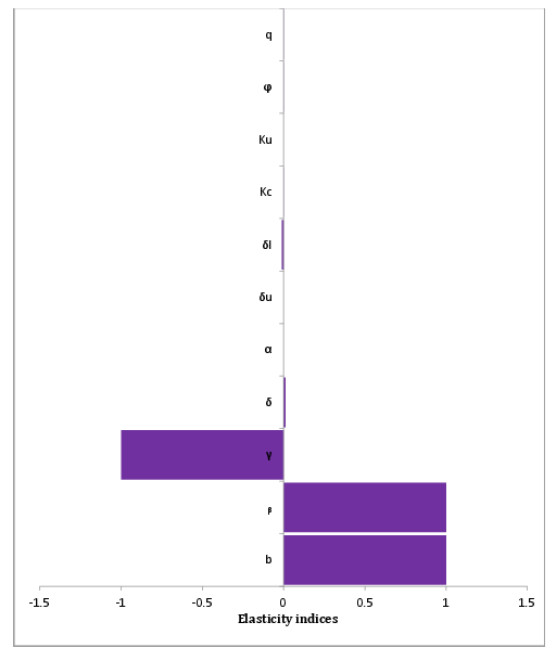

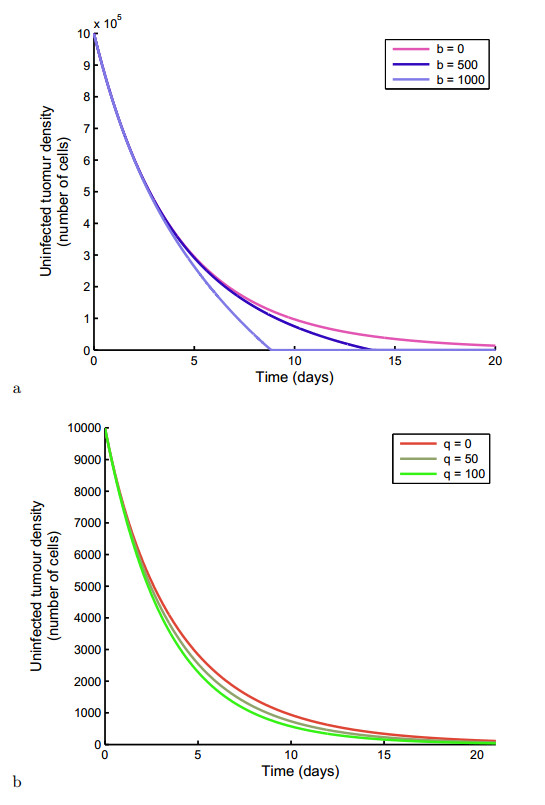

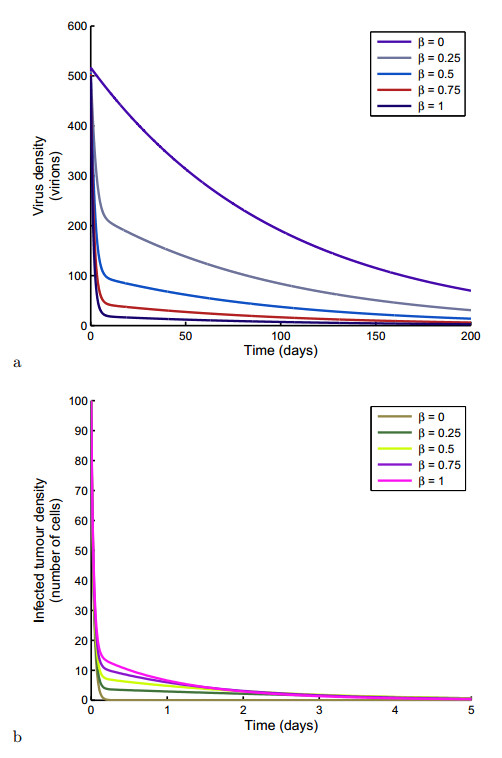
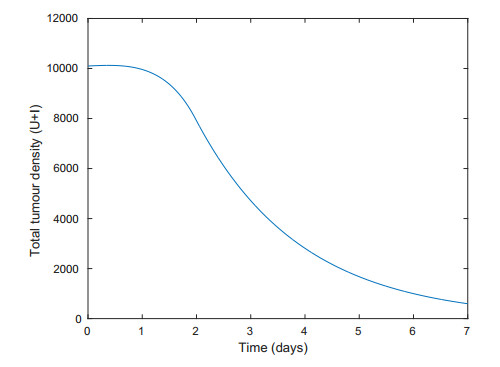
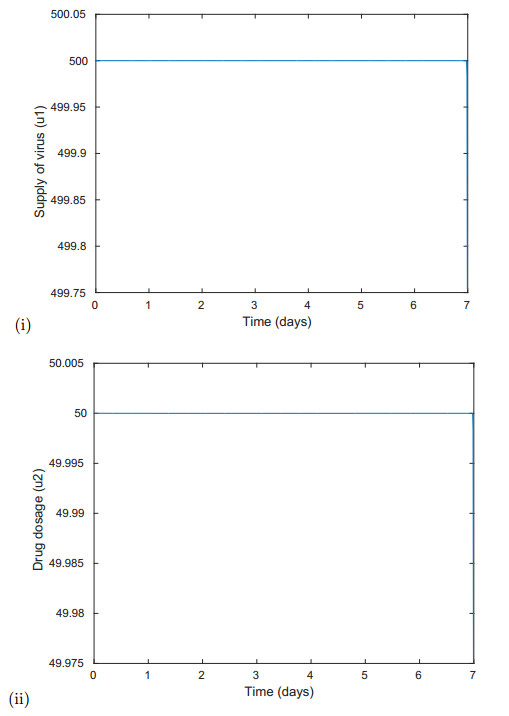


 DownLoad:
DownLoad: